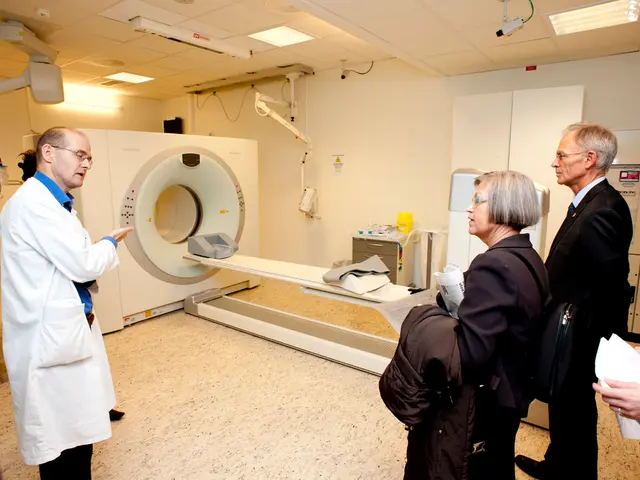Guide to Antidepressant Medications: An In-depth Examination of Antipsychotics
In the realm of mental health, atypical antipsychotics have become a significant part of the treatment landscape, particularly in the management of depression. These medications, while primarily designed to control symptoms of psychosis, have found a growing role in the treatment of mood disorders.
One of the most commonly prescribed atypical antipsychotics for depression is Quetiapine, effective in bipolar depression and as an adjunct in major depressive disorder (MDD). Known for its sedating properties, Quetiapine can also cause weight gain, a common side effect among atypical antipsychotics.
Aripiprazole, marketed as Abilify, is another popular choice. Used as an adjunct in the treatment of MDD, Aripiprazole distinguishes itself as a partial agonist at D2 receptors, which sets it apart from other atypical antipsychotics. Common side effects include weight gain and movement disorders. It may interact with certain antidepressants, particularly those that affect CYP2D6 metabolism.
Lurasidone, noted for having minimal weight gain as a side effect, is used in bipolar depression and is generally well-tolerated. However, it can cause side effects such as somnolence and akathisia.
Olanzapine, known for its sedative effects, is sometimes used in bipolar depression but is associated with severe weight gain and sedation, which limits its use in some cases.
Risperidone, while often used as a first-line atypical antipsychotic for other conditions, is less common in depression treatment compared to Quetiapine and Aripiprazole. Clozapine, the most effective antipsychotic, is generally reserved for treatment-resistant cases due to its side effect profile, which includes agranulocytosis and increased risk of seizures.
When prescribing atypical antipsychotics for depression, it's crucial to consider the individual patient's risk factors and potential interactions with other medications, such as antidepressants. Several atypical antipsychotics have received FDA approval for use in depression treatment, including Aripiprazole, Quetiapine, Olanzapine (in combination with fluoxetine), and Brexpiprazole.
Aripiprazole, Quetiapine, and Brexpiprazole have shown consistent efficacy in clinical trials and real-world settings for depression treatment. The development of second-generation or atypical antipsychotics in the 1990s opened new possibilities for their use in mood disorders. Emerging antipsychotic medications target specific neurotransmitter receptors or combinations of receptors thought to be relevant to mood regulation.
Antipsychotics primarily target neurotransmitter systems, particularly dopamine and serotonin, which play crucial roles in mood regulation, cognition, and behavior. The history of antipsychotics in depression treatment dates back to the 1950s when the first generation of these drugs was introduced.
Challenges and controversies remain in the use of antipsychotics for depression, including concerns about long-term metabolic effects, the risk of tardive dyskinesia, and questions about the appropriateness of using these medications for non-psychotic conditions. Patient education and informed consent are essential components of care, empowering patients to make informed decisions and actively participate in their treatment process.
The biopsychosocial model of depression provides valuable insights into the disorder's multifaceted nature and the rationale behind combination treatments like antipsychotics and antidepressants. Gradual discontinuation of antipsychotics and close monitoring are important to prevent relapse and manage withdrawal symptoms.
Today, the prevalence of antipsychotic use for depression has increased substantially. Combination therapy, using an atypical antipsychotic alongside an antidepressant, has become a common strategy for treating depression, especially in cases resistant to antidepressant monotherapy. Aripiprazole, in particular, has gained popularity due to its unique mechanism of action as a partial dopamine agonist.
Antipsychotic medications have emerged as a valuable tool in the treatment of depression, particularly in cases where traditional antidepressants alone prove insufficient. Ongoing research is being conducted into new antipsychotic medications and treatment approaches to improve efficacy while minimizing side effects. For a comprehensive overview of various depression treatment options, patients and healthcare providers may refer to a comprehensive guide to depression medications.
- Mental health professionals often consider atypical antipsychotics, like Quetiapine and Aripiprazole, in the treatment of mood disorders, including depression, due to their effectiveness and unique mechanisms of action.
- While atypical antipsychotics, such as Lurasidone and Olanzapine, can offer relief for certain patients, they may also lead to side effects like weight gain, somnolence, and akathisia.
- Psychology and science continue to evolve our understanding of depression, leading to the development of new antipsychotic medications that target specific neurotransmitter receptors, such as Brexpiprazole.
- Integrating a mental-health focus into a holistic health-and-wellness regimen, which may include fitness-and-exercise and nutrition, can complement the effects of antipsychotics on mood disorders.
- Practicing close, ongoing monitoring of patients taking antipsychotics for depression is crucial for managing side effects, ensuring the best possible outcomes, and providing a thorough, evidence-based understanding of the various treatment options available.







